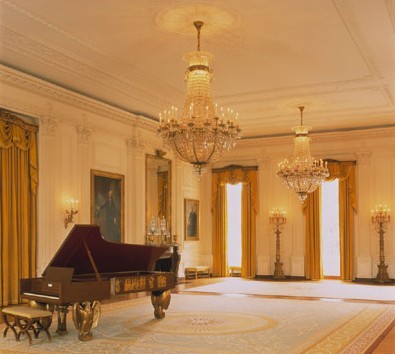I've got some answers.
On the 50th anniversary of Jackie's televised tour of her work at 1600 Pennsylvania Avenue, current White House Curator William Allman explained this week that the place continues to evolve and has, in fact, changed quite a bit since the Kennedy era.
Here's how:
The East Room, where the Kennedys held that famous dinner for Nobel Prize winners, now has a rug, thanks to Barbara Bush, as well as restored red marble mantels, which Jackie had painted white. Here it is in her time.
This is it with the Bush rug...with the photo taken in the Clinton era.
The Blue Room has also seen many iterations. Here it was in 1963.

And here it is in 1972, with different paper and draperies.
The Nixons significantly changed the Green Room, moving out Jackie's Federal Period furniture and replacing it with Duncan Phyfe pieces.
The room went from this:
To this:
Laura Bush later added a jarring modernist painting by Jacob Lawrence to the room called "The Builders."
You can see it in context in this portrait of the Obama family. To the left of the President, out of sight, hangs a John Singer Sargent painting called "Mosquito Net."
There is one room, however, that I think has been improved since Jackie last touched it: the Lincoln Bedroom. Jackie's version felt simple (as simple as a Victorian-furnished room could feel). But after seeing what Laura Bush did to it, the Camelot version seems unfinished. Fitting, perhaps.










